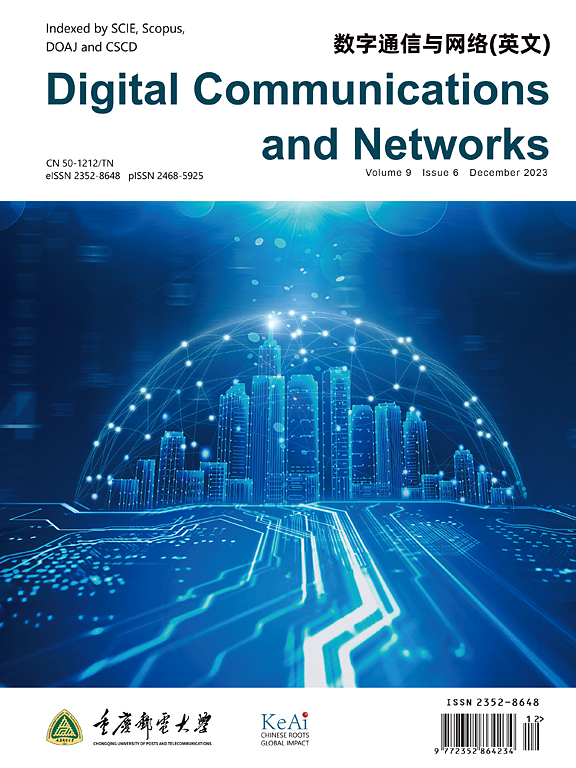Chaotic moving video quality enhancement based on deep in-loop filtering
IF 7.5
2区 计算机科学
Q1 TELECOMMUNICATIONS
引用次数: 0
Abstract
The Joint Video Experts Team (JVET) has announced the latest generation of the Versatile Video Coding (VVC, H.266) standard. The in-loop filter in VVC inherits the De-Blocking Filter (DBF) and Sample Adaptive Offset (SAO) of High Efficiency Video Coding (HEVC, H.265), and adds the Adaptive Loop Filter (ALF) to minimize the error between the original sample and the decoded sample. However, for chaotic moving video encoding with low bitrates, serious blocking artifacts still remain after in-loop filtering due to the severe quantization distortion of texture details. To tackle this problem, this paper proposes a Convolutional Neural Network (CNN) based VVC in-loop filter for chaotic moving video encoding with low bitrates. First, a blur-aware attention network is designed to perceive the blurring effect and to restore texture details. Then, a deep in-loop filtering method is proposed based on the blur-aware network to replace the VVC in-loop filter. Finally, experimental results show that the proposed method could averagely save 8.3% of bit consumption at similar subjective quality. Meanwhile, under close bit rate consumption, the proposed method could reconstruct more texture information, thereby significantly reducing the blocking artifacts and improving the visual quality.
基于深度环内滤波的混沌运动视频质量增强
联合视频专家小组(JVET)宣布了最新一代通用视频编码(VVC, H.266)标准。VVC中的环内滤波器继承了高效视频编码(HEVC, H.265)中的去块滤波器(DBF)和样本自适应偏移(SAO),并增加了自适应环路滤波器(ALF),以最小化原始样本与解码样本之间的误差。然而,对于低比特率的混沌运动视频编码,由于纹理细节的严重量化失真,在环内滤波后仍然存在严重的块伪影。为了解决这一问题,本文提出了一种基于卷积神经网络(CNN)的低比特率混沌运动视频编码VVC环内滤波器。首先,设计模糊感知注意网络来感知模糊效果并恢复纹理细节。然后,提出了一种基于模糊感知网络的深度环内滤波方法来取代VVC环内滤波器。最后,实验结果表明,在相同主观质量下,该方法平均可节省8.3%的比特消耗。同时,在接近比特率消耗的情况下,该方法可以重建更多的纹理信息,从而显著减少了阻塞伪影,提高了视觉质量。
本文章由计算机程序翻译,如有差异,请以英文原文为准。
求助全文
约1分钟内获得全文
求助全文
来源期刊

Digital Communications and Networks
Computer Science-Hardware and Architecture
CiteScore
12.80
自引率
5.10%
发文量
915
审稿时长
30 weeks
期刊介绍:
Digital Communications and Networks is a prestigious journal that emphasizes on communication systems and networks. We publish only top-notch original articles and authoritative reviews, which undergo rigorous peer-review. We are proud to announce that all our articles are fully Open Access and can be accessed on ScienceDirect. Our journal is recognized and indexed by eminent databases such as the Science Citation Index Expanded (SCIE) and Scopus.
In addition to regular articles, we may also consider exceptional conference papers that have been significantly expanded. Furthermore, we periodically release special issues that focus on specific aspects of the field.
In conclusion, Digital Communications and Networks is a leading journal that guarantees exceptional quality and accessibility for researchers and scholars in the field of communication systems and networks.
 求助内容:
求助内容: 应助结果提醒方式:
应助结果提醒方式:


